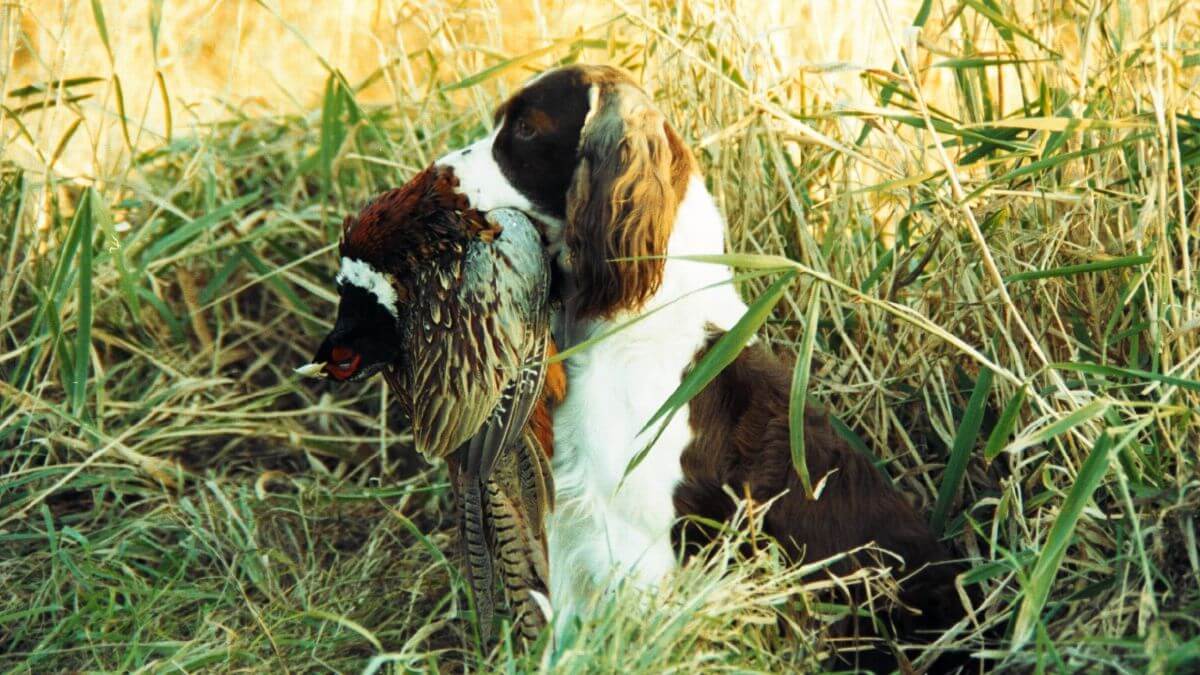
Home » Living With the English Springer Spaniel

This article was originally published in Showsight Magazine, September 2013 issue.
While it is unknown precisely how the Spaniel evolved, dogs of Spaniel type have populated the civilized world for many centuries. The Spaniel is thought to have originated in Spain and may have been brought to Britain by the Roman legions. The Spaniel was known in pre-Christian Britain, and is mentioned in an ancient law of Wales as early as 300 A.D.
Prints and paintings from the 16th and 17th centuries show dogs of similar type to today’s English Springer Spaniel. Some even have docked tails. There is mention made of a Spaniel on board the Mayflower. The dogs were used to spring (flush) or start game, both birds and other small game, for hawks, coursing hounds, and nets. The invention of the wheel lock firearm in the 17th century made “flying shooting” possible and the Spaniel was uniquely capable of this style of hunting due to its flushing ability. They are sometimes called the “poor man’s hunting dog” since they work relatively close to the handler/gunner and are hunted on foot rather than horseback.
Throughout the 19th and early 20th century in Britain, smaller dogs in a litter would be used to hunt woodcock and were referred to as “cockers”. Larger littermates, used to flush or spring game, were called “Springers”. Ultimately, the two sizes were developed into separate breeds, the Springer becoming the largest of the land Spaniels. The Sporting Spaniel Society of Britain decided upon the name English Springer Spaniel in 1902.
English Springer Spaniels with identifiable pedigrees were first imported to North America from England to Canada in 1913. In a short period of time, the breed became one of the most popular breeds eligible for American Kennel Club registration. Early in their history in the U.S., many Springer breeders and owners enjoyed working with their dogs in the field and also showing them in conformation competition. The English Springer Spaniel Field Trial Association, the parent club of the breed, was founded in 1924. At that time, it was not unusual for dogs to compete in a field trial one day and be presented in conformation competition the next day. This emphasized the versatility of the breed from the early days here in the United States.
“Dual type” Springers—those capable of excelling in both conformation and field trial competition—have not existed since the 1940’s, when the last dual championships were earned. Field trial enthusiasts began selecting those qualities in their dogs which produced top caliber performance in the field, while show-minded breeders bred dogs to conform with the written standard of the breed as successful conformation competitors. The Standard for the breed does not distinguish between show and field style dogs. Many field-bred Springers have lovely breed type and many show-bred Springers have good hunting ability. The advent of spaniel hunting tests have offered a venue to those breeders and owners maintaining high level hunting ability within what is considered showbred Springers.
The true beauty of the English Springer Spaniel can be found in its original purpose as a companion gundog. The diverse appearance of today’s show and field bred Springers is due to specialization, and to the choices breeders make to achieve success in their chosen sports. Competitive field trial Springers are the ultimate in athleticism and performance, while the competitive conformation Springers are beautiful examples of breed type, soundness and symmetry.
The English Springer Spaniel has a friendly, happy, even temperament and should get along well with people and other dogs. An affectionate breed, Springers want to be part of family activity and are highly social. The breed has often been described as alert, kindly and trusting. Excessive shyness or aggression are not acceptable in an English Springer Spaniel.
While there exists a “split” within the breed, overall the English Springer Spaniel is the essence of a versatile breed. The advent of the spaniel hunting test program along with additional performance competition venues has allowed this versatility to be evaluated more readily and better demonstrated on a regular basis. Their intelligence and enthusiasm, along with the traits of being a willing-to-please and biddable breed lend to a pleasing companion dog, making the English Springer Spaniel an outstanding hunting companion as well as a breed that excels in performance events such as obedience, agility, and tracking. The ESSFTA recognizes those English Springer Spaniels demonstrating a high level of versatility through the Versatile Springer recognition program. Dogs earning this recognition can be found at http://www.essfta.org/about-the-essfta/awards-and-achievements/
The secret to the many and varied successes the English Springer Springer enjoys is related to the qualities of being a smart, happy, and eager to please breed.